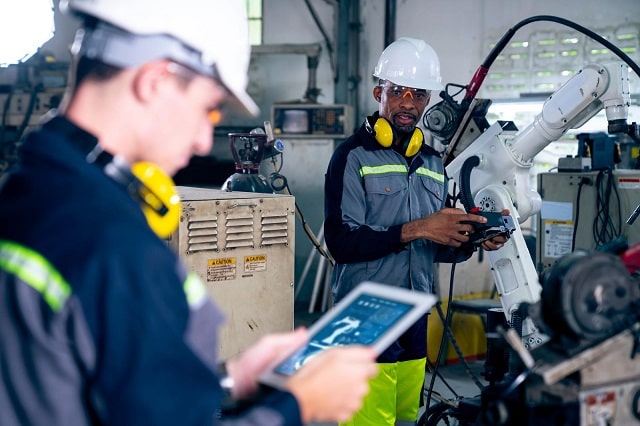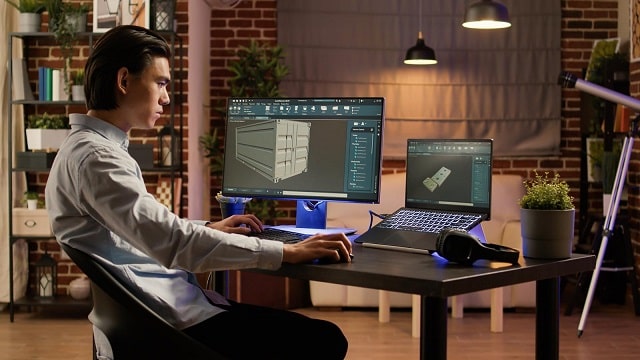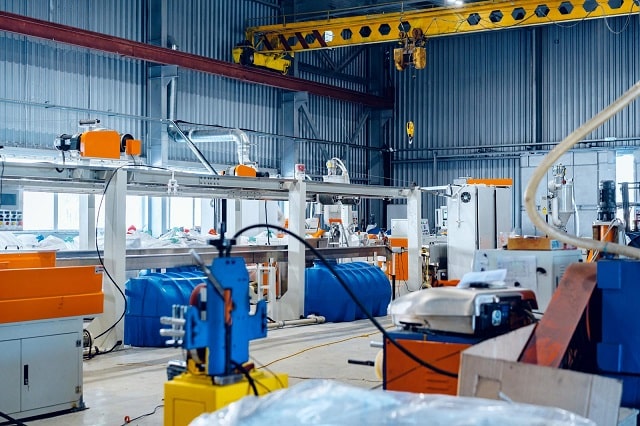As an original equipment manufacturer (OEM), you need to supply your clients with reliable components. No matter your industry – whether you’re manufacturing semi-trailers and trucks, auto parts, HVAC components, food equipment, or anything in between – you’re expected to provide safe, effective, and innovative products that keep your customers moving forward.
But how do you go about creating these products? It means much more than the bottom line: effective products have to solve a problem with practical solutions, too.
For many OEMs, that comes down to outsourcing their product manufacturing. It’s easy to become detached from the manufacturing process as long as your goods arrive on time and meet quality standards, but is that really enough? You need to understand the product development and manufacturing process – and stay on top of industry trends and best practices – to better manage your suppliers.
Learn how product development and manufacturing works for OEMs, as well as the entire product lifecycle process, to optimize your business.

As you know, products don’t just appear in your customers’ hands. It requires a lot of energy, thought, and money to bring these products into existence.
Product development and manufacturing is the long process of taking a product to market. This includes every step from product ideation to when the components ship from the factory to your B2B buyers.
Whether you’re conceptualizing a completely new idea or you’re improving upon an old product that’s due for a facelift, product development is critical to staying on the bleeding edge of your field.
A product goes through several stages in its lifecycle before it becomes retail-ready. OEMs and their contract manufacturers (CMs) need to follow eight stages to design and manufacture a product that’s competitive, no matter their industry or niche. This eight-step process ensures that your product not only does what you need it to do, but that it’s also safe, compliant, and cost-effective.
Conceptualization (or ideation) is arguably the most important phase of the product development lifecycle. This is when you come up with an idea for your product— a deceptively simple process that many OEMs try to breeze through.
Ideation is important because the idea affects every single aspect of the product. You need a great idea to create a mockup, a prototype, and throughout the entire manufacturing process.
Many OEMs start with a product idea first and then try to make it fit into the market. But that’s actually backward: the best way to conceptualize a product is to start with your customers’ needs.
B2B buyers are like B2C buyers: they buy your components to solve a problem. Always start with pain points to ensure that your products will appeal to a B2B audience.
At this stage, viability is the most important thing. If you spend time and money on an idea that the market won’t support, it’s really going to hurt your bottom line.
That means:
Once you decide on an idea, create a Product Requirements Document (PRD). Your design team will consult this document in the next phase.

In the second stage of the product development lifecycle, your team needs to create product specifications. This is also known as the form, fit, and function stage, where your designers go over the PRD to iterate digital versions of the product.
In this stage, your design team will mock up the product with digital renderings, taking several factors into account, including:
If possible, it’s a good idea to put your product through a digital stress test. Thanks to CAD and 3D modeling, you can figure out the mechanics of how the product will work without building a single physical prototype. It’s much cheaper to iterate the product digitally, ensuring that you preserve your budget for a more advanced prototype in the next phase.
With alpha prototyping, you take your product design off the screen and put it into the hands of your design team. The main concern in this step is function, but your product will ultimately need to tick all the boxes outlined in your PRD.
At this stage, you only need to answer one question: does the alpha prototype do what it’s intended to do?
A great way for OEMs to reduce the cost of alpha prototyping is with 3D printing. It focuses solely on function, churning out multiple iterations of a product for a very low cost.
Alpha prototypes won’t be perfect, and they usually don’t represent the final product you put on the market. It doesn’t have to be visually appealing right now either—keep your prototypes minimal to identify major issues without busting the budget.
In the fourth stage of the product development lifecycle, you’ll move on to testing a beta prototype. This is where you ensure that the prototype ticks every requirement of your PRD, including your form, fit, and function needs.
In this stage, you’re looking at how all the components of your product come together in the physical world. This means creating betas in varying forms, sizes, and colors if necessary.
Right now you’re concerned with how users will navigate this product. What’s their experience like? What do they like? What do they want to change?
User testing is a great way to get feedback during the beta product phase. Since your beta will closely resemble the final product, try to get a few products in the hands of your customers.
The best way to do this is to involve the marketing department during this phase. This includes:
Marketing can also put your product into the hands of a few real-world customers. Their feedback is invaluable, so don’t be afraid to re-iterate stages 1 – 4 if it means you can manufacture a better product.

By the end of the fifth phase of the product life cycle, you’ll have a good idea if this product is ready to hit shelves. But you need to make sure that it hits several criteria before you look for a manufacturer.
In this phase, your team needs to verify the product does what you need it to do. This includes quality assurance testing, where you check the product for flaws or errors that become apparent with standard use.
If you work in an industry with regulation, this is the step where you need to engage with health, environmental, or other industry auditors. This can cause delays, but it’s better to know with certainty that your product is market-ready before you start manufacturing. With regulatory requirements strengthening in many sectors, compliance should be a top priority for OEMs.
At the end of this phase, you should know that your product is:
In the sixth phase, you’ll need to create a manufacturing plan for your product and find a manufacturer to execute that plan.
How should you build this product in a factory? Instead of pursuing a manufacturer without a plan, it’s a good idea to brainstorm a list of must-haves first. This way, you can ensure that the manufacturers you interview have the capabilities you need to take your product to market.
You likely have a network of manufacturers that you know and trust. It’s essential to find a manufacturer who’ll follow through on your design, follow safety protocols, and protect your intellectual property. To find the right manufacturer, make sure you ask questions like:
Try to find a manufacturer who will give you extra perks, like packaging and shipping options. That’s an additional cost, but it’s more efficient to have everything in one facility—and the manufacturer might even give you a discount for your loyalty.
Regardless of the manufacturer you choose, ensure that you protect your intellectual property (IP). If you’re sourcing manufacturers from overseas, it’s a good idea to register your product in that country, too. This makes it very clear you’re the international rights holder of that product.

Here’s where the rubber meets the road. In the seventh stage of the product development life cycle, your factory will begin producing units.
It’s tempting to let your manufacturer handle things from here, but it can easily go off the rails without hands-on management. You should understand how the factory works and that it’s capable of churning out consistent products. In fact, it’s not unusual for many OEMs to visit factories for weeks at a time to ensure everything runs smoothly.
Whatever you do, stay involved with the manufacturing process. Make sure the raw materials, product quality, and production processes are followed to a tee. If the manufacturer is having problems, you’ll discover them sooner and potentially save millions in production costs.
Product development and manufacturing is never truly finished. Over time, OEMs should refine how they make their products.
That might mean:
It’s critical to take feedback from your customers, too. For example, if a certain component doesn’t last long enough, that’s important feedback for your product team.
In the optimization phase, it’s also important to optimize the manufacturing process. Work with your manufacturer to see if anything can be automated to drive down prices or time to market.
Whether you’re improving upon a current product or creating something new, product development and manufacturing is a must for OEMs. It requires design, thoughtful testing, effective marketing, and trustworthy manufacturing partners to bring your ideas to life.
While product development is a long and challenging process, good partners make a difference. Metalphoto of Cincinnati (MPC) has 50 years of experience with full-service manufacturing. We offer durable labels, nameplates, and panels for OEM product identification. Request a free sample to see our work in action.
Our sales engineers are experts in automatic asset tracking, tagging and identification,a nd can answer all your questions. Get in touch now.
Lets Talk ›